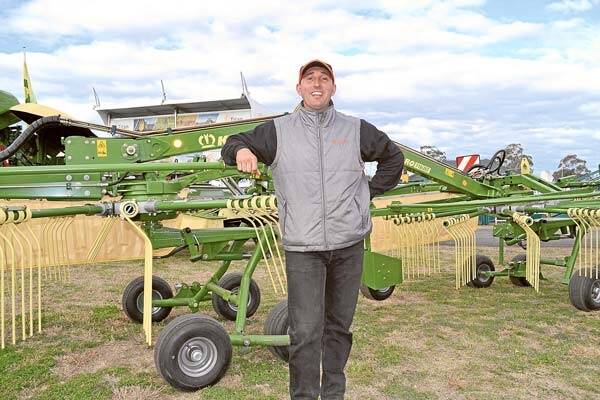
A COMBINATION of low supply and gear due for replacement has seen a return to investment in hay gear.
Australian Fodder Industry Association executive officer Darren Keating said there wasn’t much hay left in the country.
“In the past three or four years we’ve had declining hay production, probably lower than average... so if we want get back to a situation where we’ve got a bit of a buffer zone there we’re probably going to need to have quite a large investment in hay and silage this year,” he said.
He was already seeing some positive signs from machinery sales and hay equipment traders who sell gear such as wrap and string.
There was also the possibility some frosted crops could find there way into hay, but this depended on how much the customer would pay, he said.
Mr Keating was also seeing signs of people upgrading machinery who had previously held off purchasing.
“The second-hand market for hay gear is still pretty saturated, but I have heard some positive things from new machinery moving,” he said.
“I’ve heard a couple of the companies mention they’ve sold out of the big (new) square balers.”
He said this was a positive sign as he expected there had been a few farmers and contractors running machines that were towards the end of their productive life.
“The positive feel I suppose is based on the big demand for fodder, the running down of stocks nationally and good prices this year – I don’t know that we’ll see the same prices next year,” he said.
However, he said farmers making hay should manage their risk by knowing who at the other end would buy the hay and when they would want to buy it.
“If you’re producing hay for the export market, you’ve got really good signals from your buyer and really good communication there and that’s one of the things we saw this year,” he said.
Anybody producing export hay had found the buyers had got in early and had a good discussion about quanity and price, he said.
These buyers got the hay they needed by having those early discussions, whereas other large users of hay found it difficult this year.
However, the amount of hay being traded at present was also back, partly due to a lack of supply, but also because new season hay was just around the corner.
Feedlots had remained active buyers as they took advantage of low-priced cattle.
“It’s looking pretty positive, but at the end of the day there are still a fair few decisions people need to make about whether they wrap the crop up or not and bigger picture, water supplies nationally seem to be in pretty good shape,” he said.
Spending at the big machinery field days, Gunnedah’s Commonwealth Bank AgQuip, suggested farmers were keen to make hay.
Claas Harvest Centre sales manager Geoff Palmer, Narrabri, said in line with the season, which had brought some failed crops, he had fielded a lot of baler inquiry.
“We’ve got some representation from our Scone dealer here and he has experienced some good sales as well off the site,” he said.
“So I think people are looking at fodder conservation... because there’s been a bit of a lacklustre season the past several years and they’re filling up storage again and getting ready for the next round.”
The interest and sales have been mainly to farmers updating old gear.
“In some areas of our region there’s some good grass production, so its time to update.
“There’s going to be some handy hay making in central NSW, particularly around Wellington,” Mr Palmer said.
Agco regional sales and marketing manager Stephen Nankivell had also taken strong inquiry at AgQuip.
“We’ve probably had our strongest hay season ever, some of our ranges, our 4x4 square baler (2170 range) we’ve sold out of,” he said.
“But (we’ve also been) very strong in mower conditioners, rakes and tedders.”
He said a lot of farmers had fed everything they had.
“We’ve had a good grass growing season, barns are empty and people want to make hay,” he said.

